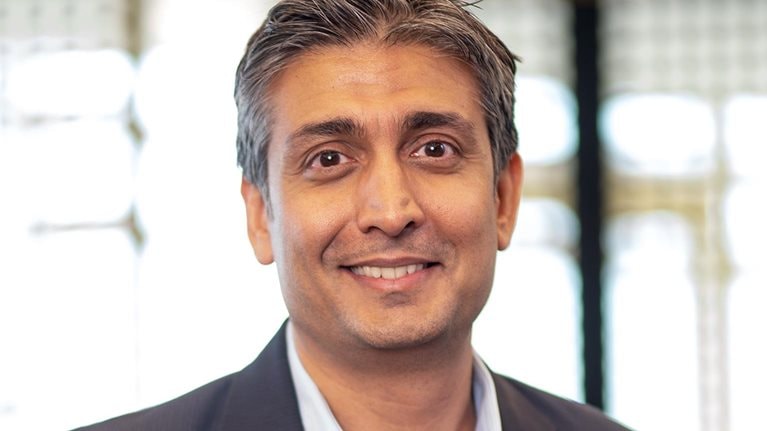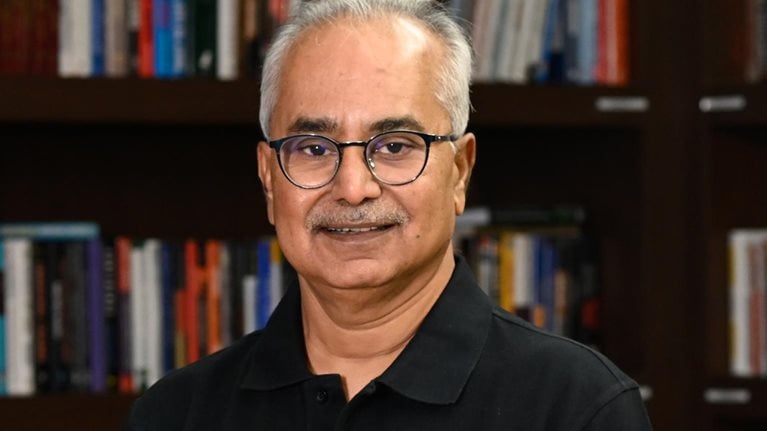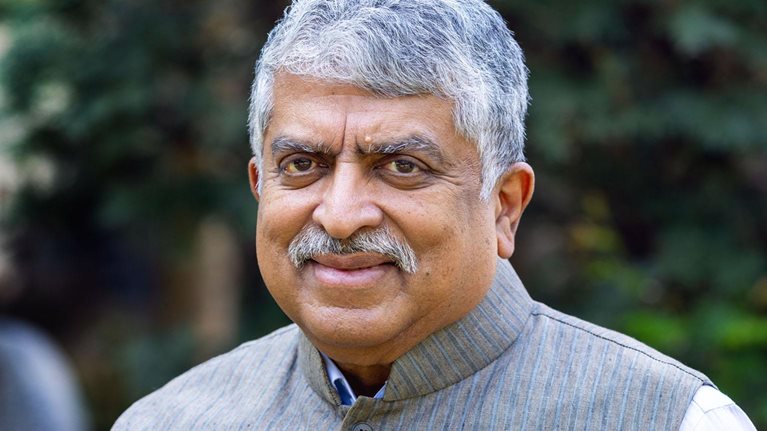This interview is part of a series of India Ahead conversations with visionaries, future builders, and thought leaders on what it will take to drive India’s growth over the next 25 years.
A combination of investments in India and a doubling down across Asia appears to be a successful strategy for Blackstone’s Private Equity group. In India, its portfolio has a total market value of $60 billion. Marquee deals include purchasing a majority stake in IT service provider Mphasis, acquiring the glass packaging business of Piramal Group, and exiting from business service provider Intelenet for $1 billion (in 2018).
Leading the program is Amit Dixit, Blackstone’s head of Private Equity in Asia, who has been with the company since 2007. In a conversation with McKinsey’s Vivek Pandit, Amit discusses how the Indian market has evolved over the past decade and Blackstone’s approach to building value over time by using innovative technology and world-class talent. The following is an edited version of their conversation.
McKinsey: Blackstone Asia’s record is more India-centric than that of most regional funds. What makes you bullish on India?
Amit Dixit: India as a country offers scale. We have $60 billion in assets across private equity and real estate in India. Very few countries in emerging markets offer that scale. Second, India has a combination of both a large domestic market and a large export opportunity. Again, it’s a rare combination to find both in emerging markets, and we have played both. We have made several investments in export industries where India has a global competitive advantage—software, services, pharmaceuticals, and auto components—and several investments domestically in consumer, financial, healthcare services, and, biggest of all, real estate. These strengths are in addition to well-known aspects of India, including democracy, the rule of law, a large middle class, and our high GDP growth rate.
McKinsey: What would you say are the main contributors to Blackstone’s success in India?
Amit Dixit: When I look back on what has worked, I think it’s a few things. First, because our strategy is to be a value-adding investor, we need deep domain focus. We’ve bought and sold mostly in the same sectors for the last decade, and we haven’t deviated outside of that, so we have the right people, the right network, and the right domain expertise.
Second, we have learned to be a builder of businesses, not just a buyer of businesses. If the opportunity is only to buy and sell, that’s not for Blackstone. We buy to build, and in every situation we are looking for an opportunity to build the platform we have. That is something we believe is unique and has now been part of our DNA for over a decade.
Third, it’s all about alignment and partnerships with management, fellow shareholders, founders of companies, promoters, and owners. You have to row in the same direction and be a trustworthy, transparent partner. We dedicate an inordinate amount of emphasis to get that partnership and alignment right. One way to do it is to make sure everybody is completely aligned on the equity value creation plan. We are very transparent as to what our objectives are and what the investment plans are, and we agree on that up front.
Next, I would say we’ve learned, in the last three years, that technology is no longer a vertical. Technology is a horizontal. Every business is a technology business. If you get the technology transformation right, you get two benefits: you get accelerated revenue growth because you’re on trend, and, importantly, you get a very strong multiple upon your exit at the IPO because you future-proof the business, and the next investor is seeing a ten-year runway. For example, we converted Sona Comstar from a combustion engine auto company into an electric vehicle company, Mphasis from a traditional outsourcing company into a cloud migration company, and Aakash Educational from a physical-education company into an “edtech” company.
The last point is about management. The talent pool in India and the quality of management are very strong. We have learned it is key to align the talent with the shareholder and customer objectives. We think of ourselves as almost a glorified head-hunting firm because at all times we’re ensuring that the right people, with the right alignment, are in critical leadership roles in our companies. And when I say “leadership role,” I don’t mean just the CEO or CFO. Typically, our management teams have equity programs extending to 150 to 200 people. You need to get that right because if you get the management right, magic happens. The change in behavior between that same leader who was earlier a manager and is now an owner is dramatic. We have recognized the power of ownership and brought that equity ownership culture into the Indian management teams, and that’s worked well.
McKinsey: For a long time, a lack of adequate exits and options deterred some investors from India. How does the Indian private equity market stack up from a risk–reward perspective, and how has Blackstone adapted to account for this?
Amit Dixit: There have been two big changes in the market over the last decade. One, the shift from minority investing to what we call control deals, where a foreign investor owns more than 51 percent of the company. When Blackstone started in India, it was a rarity to have a control deal. It was almost a 100 percent minority investment market in India. If you fast-forward to today, we can see that control deals are becoming more common. And both control and minority deals are now much larger in size than they used to be. That’s a fundamental change.
We can see that control deals are becoming more common. And both control and minority deals are now much larger in size than they used to be. That’s a fundamental change.
The second big change is exits. To your point, it was always a great market to invest in but a difficult market to harvest. If you talk to the limited partners or investors, that would have been the most common complaint five years back. That has changed because the markets in India actually have done well, and not just the IPO market but the M&A market as well. We have seen exits from dividend recaps, from IPOs, secondary sales, trade sales, private equity sales, and multiple exits.
That’s a big change in our strategy. We have always focused on being a business builder and having a very active large stake in a company. What that gives us is exit optionality. It’s important in emerging markets to have exit optionality because IPO markets can be few and far between, as you saw between 2011 and 2013 in India, when the IPO market slowed down. Even in the last six months, we’re seeing IPO windows close. If you’re a minority investor, you’re largely stuck with an IPO exit, but having multiple options and exercising those options make a big difference. The Indian market is becoming deeper, larger, with more exits.
McKinsey: There is tremendous political and economic volatility today. How are private market investors like Blackstone responding to this uncertainty?
Amit Dixit: I would say there are a few aspects to this. First, you don’t have to put your head in the storm. We tend to be long-term investors and don’t have to either invest or exit anything right away. We don’t get caught up in the short term. I think that’s important, and, thankfully, our capital gives us the flexibility to do so because we raise long-term capital.
Second, in many businesses, inflation is so hard to pass on to your customers that it’s important to focus on costs. You have to balance the growth agenda with the productivity agenda. You have to make sure that your business is efficient because your customers expect you to do so, and the benefit will come when the inflationary environment eases. At that time, you will reap the rewards of being very prudent in this environment.
Third, there is an opportunity to, potentially, make acquisitions or be more aggressive in gaining market share. We have an acquisition conversation going on in every one of our companies or, in some companies, multiple acquisition conversations. We think it’s a very good environment for talking acquisitions and playing offense to increase market share.
In terms of new investments, we are navigating the environment with patience and dialing up on quality. As a US dollar investor, the world does look a lot cheaper. In most markets, keeping India aside, investors are now trading at a discount to the ten-year averages of the long-term market. We want to dial up on the quality, and quality is always expensive. It won’t be cheap, but it’s cheaper than it used to be 12 months back.
That’s where being a builder comes in, because whatever you are buying will be relatively expensive in somebody’s eyes unless you have a differentiated point of view on what you build, not what you’re buying. In our investment committee approval meeting , we have that value creation plan—what we call the business building plan—up front. Many years back, those plans would come into place six months after the investment or even a year after. Now, they come six months before the investment. As soon as an investment closes, you hit the ground running.
McKinsey: As someone who works closely with family businesses and entrepreneurs in India, what advice would you have for families seeking to partner with private equity firms and build high-performing organizations?
Amit Dixit: We have, over the last 15 years, partnered with many family-owned businesses. It’s important to have the business governance ready. Good governance is good business. What do I mean by that? Have a well-reputed accounting firm do your audits, have a diversified board, have the right people, have proper financial controls in place, and put an ERP [enterprise resource planning] system in place. For any kind of activity you want to do—whether it’s an IPO or private equity—it’s just good governance. Even growing your own business is very hard to do if you don’t have this basic infrastructure in place.
Second, what has contributed to Blackstone’s success is what is going to contribute, and is contributing, to the success of family-owned businesses: attract, retain, and incentivize best-in-class management. I cannot emphasize how much of a difference a great manager versus a good manager can make. It’s a very big point, but for great managers to succeed, you have to give them the operating freedom, the empowerment, and the ability to execute, and you do not second-guess on the strategy. That requires a certain amount of framework alignment, and I think the onus is on family businesses to make it work.
The third thing, I would say, is to focus. India is growing and has become very competitive and very organized. There are multiple competitors in each space. You have to put in your 150 percent no matter where you are. Otherwise, you cannot even have a shot at winning. Pick your spots, pick your focus, and don’t have that diversified sort of approach. Yes, you will have to make sharp choices. It’s not easy.
McKinsey: Looking ahead, where do you see the greatest investment opportunities in India over the next five to ten years?
Amit Dixit: From the Indian perspective, broadly, there can be two buckets: domestic and exports. In the domestic area, the digital consumer is a long-term theme. I’m purposefully using the term “digital consumer” and not “consumer” because I think the trend of consumption is becoming digital, whether it’s consumption in healthcare or consumption in retail moving to digital channels. Another big theme is the aging population and the impact on life sciences and healthcare. And the growth of financial services in India as GDP grows is expected to drive Indian savings away from real estate, gold, or other physical assets into financial assets. So, financial services is another multidecade trend.
In the exports area—opportunities where India has a global competitive advantage—exporting software services is a classic. It’s an almost $200 billion export industry for India. It is a big sector for Blackstone itself, both in private equity and real estate or real-estate tenants. We have also had very strong success now with manufacturing, where the opportunity—what we call the make-in-India opportunity— is much bigger than what we have tapped. India can be a manufacturer of a lot more goods, including pharmaceuticals and chemicals.
These are some of the themes I would focus on, both domestically and from an export standpoint, for a ten-year point of view.


